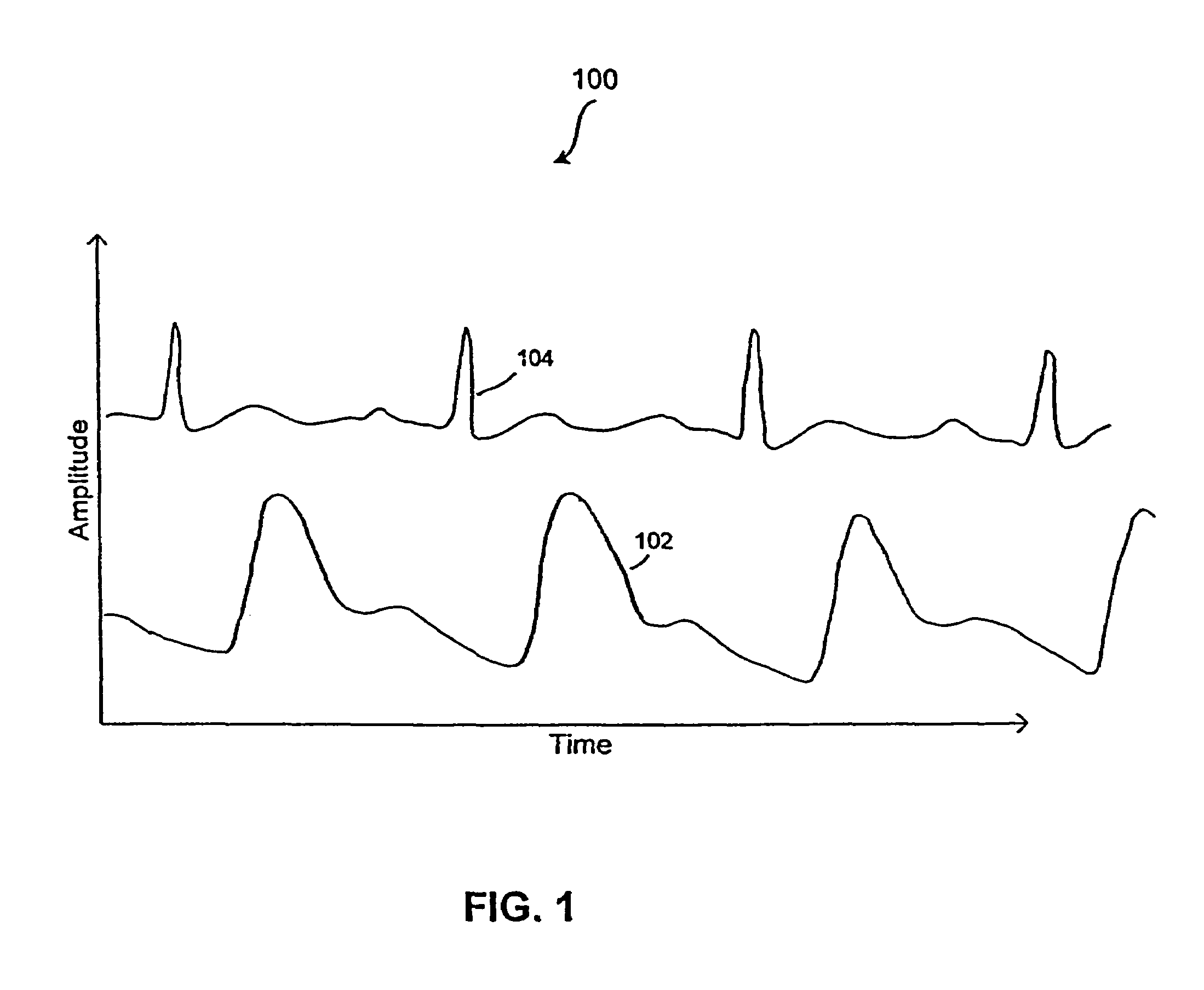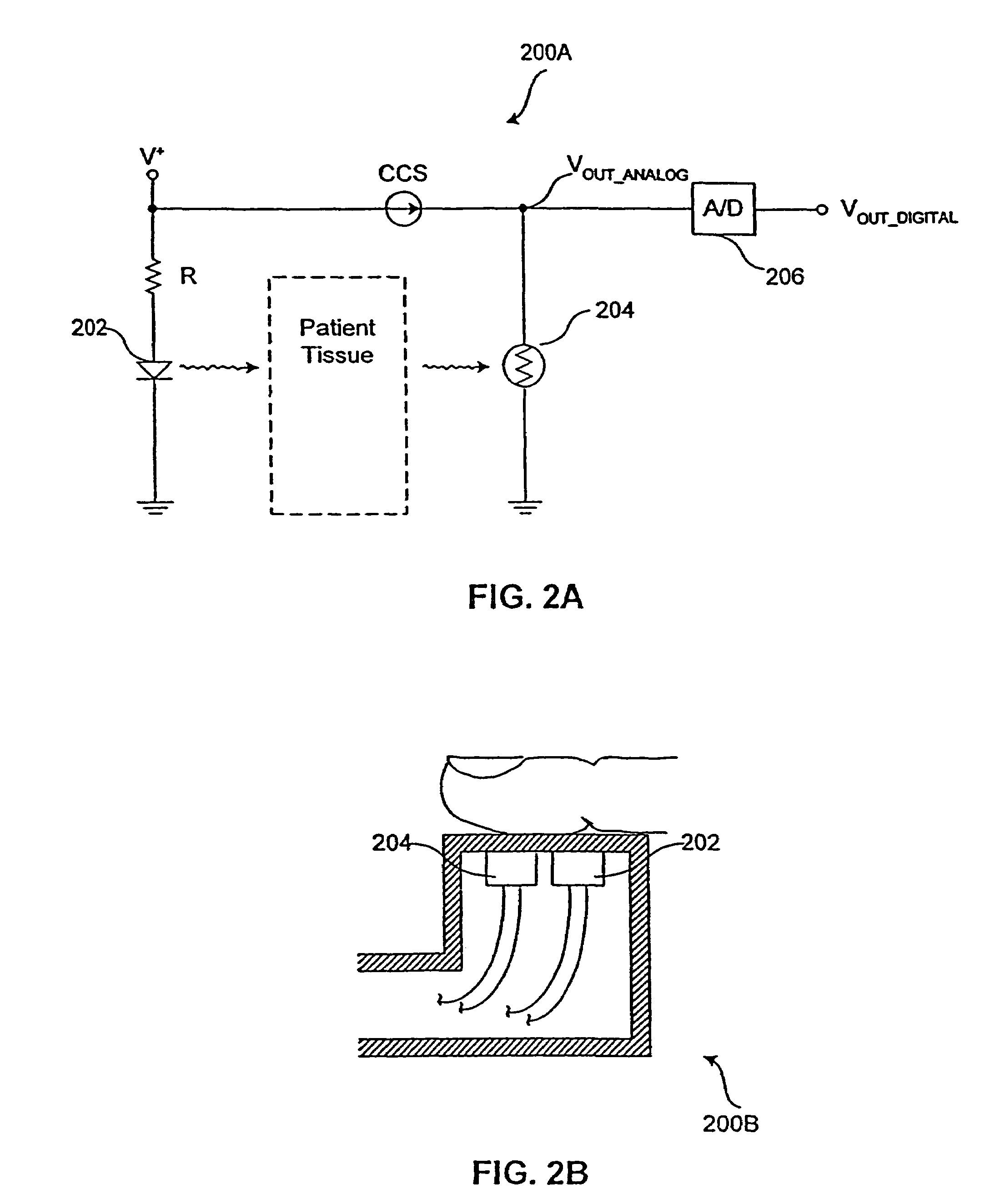Methods and devices for reduction of motion-induced noise in pulse oximetry
a technology of motion-induced noise and pulse oximetry, which is applied in the field of methods and devices for reducing motion-induced noise in pulse oximetry, can solve the problems of poor measurement of volume changes, inability to accurately measure pulse velocity, and inability to accurately measure the volume of changes, etc., to reduce motion artifacts, reduce motion artifacts, and increase the accuracy of blood oxygen saturation estimates
- Summary
- Abstract
- Description
- Claims
- Application Information
AI Technical Summary
Benefits of technology
Problems solved by technology
Method used
Image
Examples
Embodiment Construction
[0042]The following description is of the best modes presently contemplated for practicing the invention. This description is not to be taken in a limiting sense but is made merely for the purpose of describing the general principles of the invention. The scope of the invention should be ascertained with reference to the claims. In the description of the invention that follows, like numerals or reference designators will be used to refer to like parts or elements throughout.
[0043]In accordance with an embodiment of the present invention, the requirements on the optical properties of a photoplethysmography system which minimizes noise artifact are defined mathematically using a modified version of the Beer-Lambert law. The Beer-Lambert law relates attenuation of light intensity to the optical pathlength and optical properties of a sample. The absorption coefficients that appear in the Beer-Lambert law are defined under precisely controlled laboratory conditions. In a practical settin...
PUM
 Login to View More
Login to View More Abstract
Description
Claims
Application Information
 Login to View More
Login to View More - R&D
- Intellectual Property
- Life Sciences
- Materials
- Tech Scout
- Unparalleled Data Quality
- Higher Quality Content
- 60% Fewer Hallucinations
Browse by: Latest US Patents, China's latest patents, Technical Efficacy Thesaurus, Application Domain, Technology Topic, Popular Technical Reports.
© 2025 PatSnap. All rights reserved.Legal|Privacy policy|Modern Slavery Act Transparency Statement|Sitemap|About US| Contact US: help@patsnap.com



